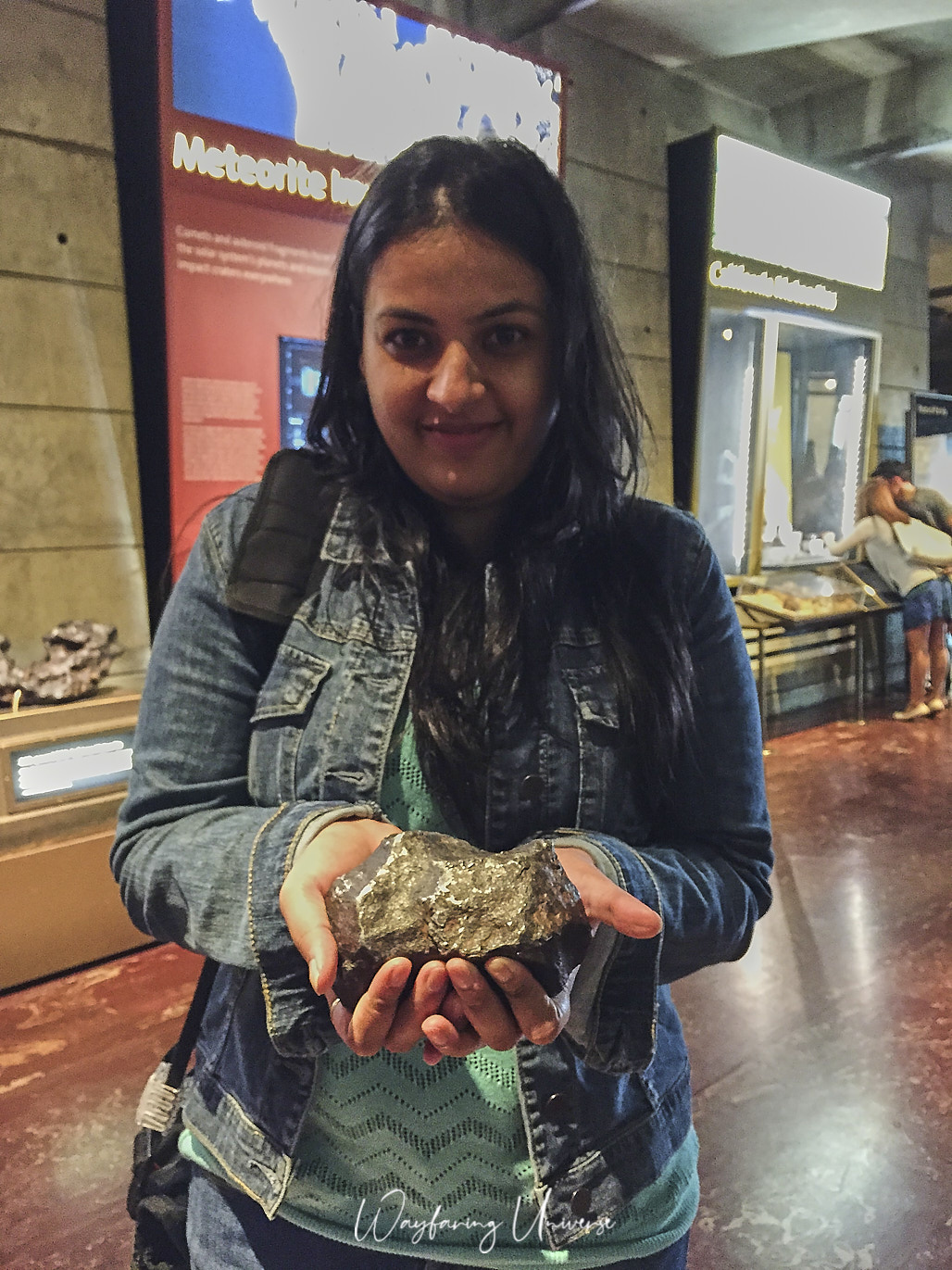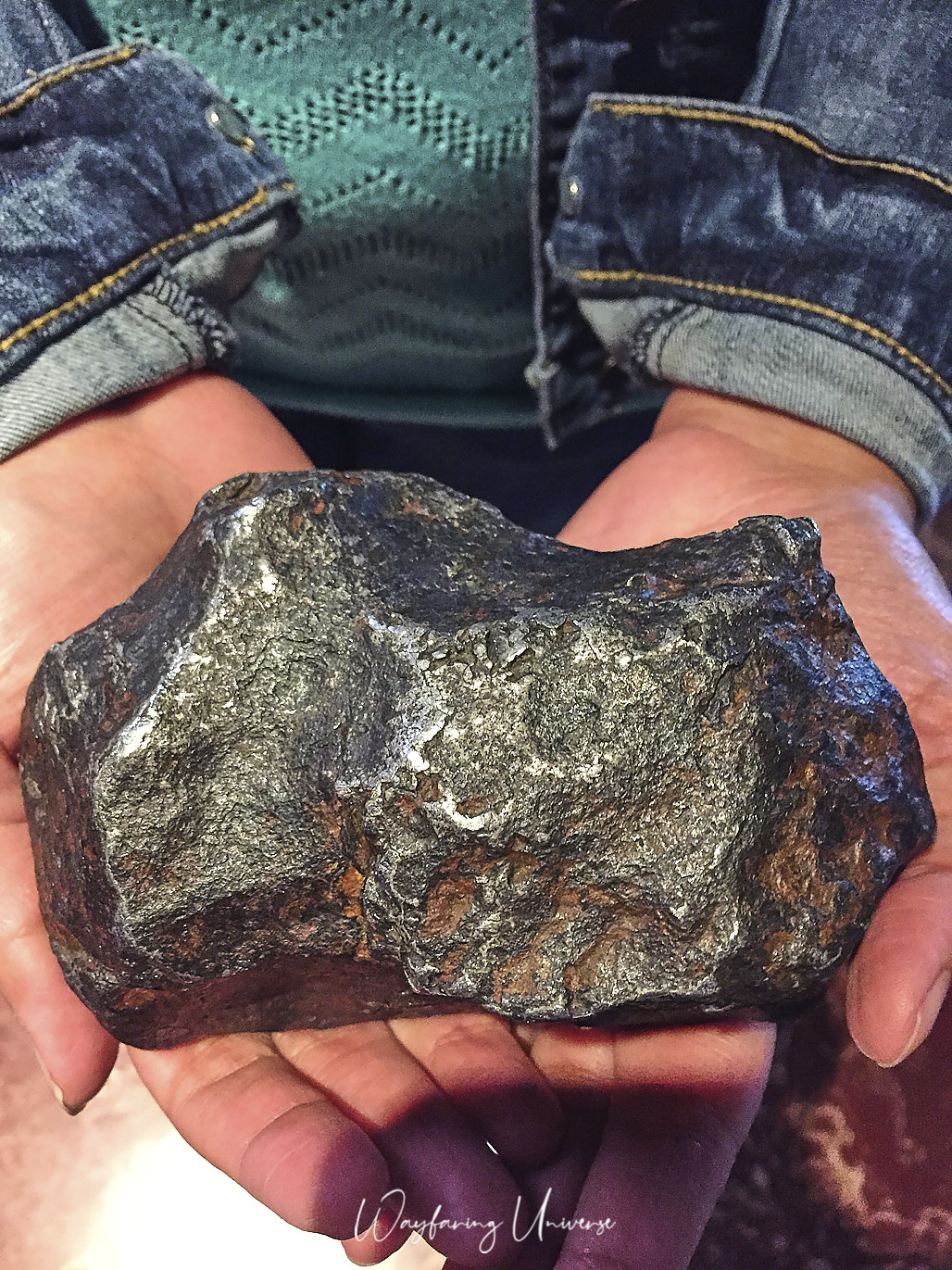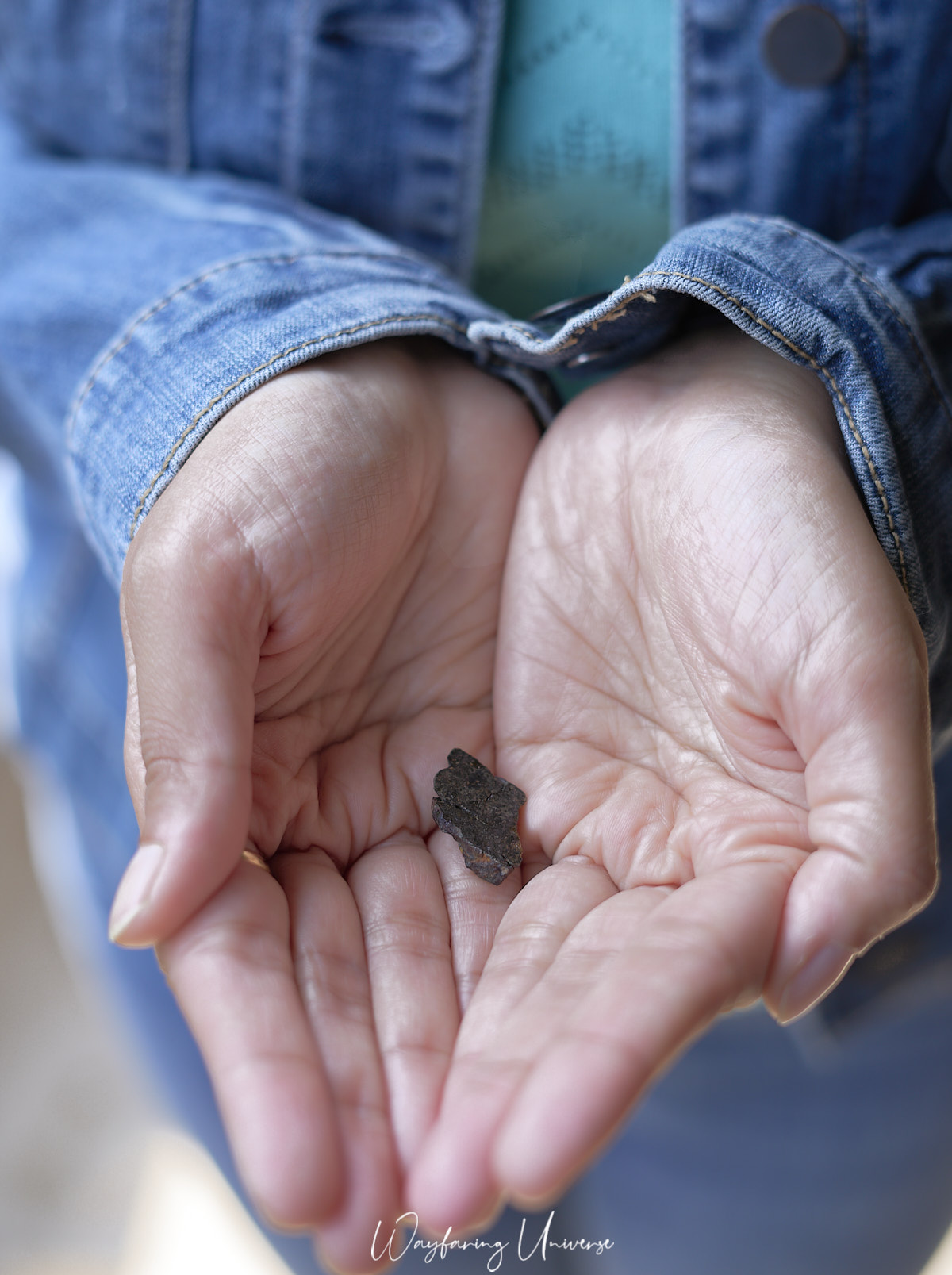Metorite- From holding it once to owning it now
May 24, 2015
“Is anyone interested in holding this piece of rock?” - I heard a voice from across the hall at Griffith observatory.
“This is no ordinary rock,” he said again. Of course, it is, I thought to myself. It’s in the observatory; it surely must be an ancient rock. Usually, such things are off-limits, so I decided to go up to this gentleman and imagined how cool it would be to hold one of them. He started explaining about the rock.
The rock was anything but ordinary; in fact, it hailed from beyond our planet—oh my goodness! It was a meteorite - A Space Rock. I couldn’t hide my exhilaration, which explains the quirky expressions captured in the picture below.
“Can I hold it? Are you really serious, so I can take it from you just like that”, I asked him nervously.
“Of course you can; just be careful it is pretty heavy.” Meteorites are very deceiving. It didn’t look bulky, but it was very, very heavy; I could not hold it for hold for long (fearing I might accidentally drop it).
“OMG. OMG. OMG. This is unbelievable.”
It was a joy to behold, in one moment when you feel this is it, and in the other, you are like, am I daydreaming?


The driving force behind my foray into amateur astronomy stemmed from a deep-seated fascination, or perhaps even an outright obsession, with meteors. Back in the 1990s, I stumbled upon a collection of mesmerizing photographs capturing meteor showers. These images featured multiple meteors (stacked photo) gracefully descending from the heavens, etching a lasting impression in my mind. From that moment on, two grand aspirations occupied my thoughts: witnessing the majesty of Everest and experiencing the awe-inspiring spectacle of meteor showers at least once in my lifetime.
So my quest continued; after moving to Delhi in 2010, I started researching into the intricacies of observing and locating meteor showers. That’s how I found AAAD (Amateur Astronomer Association of Delhi) in 2012, and there I learned what really meteor showers were (a far cry from the images I had envisioned over the years).
Unfortunately, my opportunity to witness them in India did not materialize. It wasn’t until 2015 that I was fortunate to behold these celestial wonders in California (and what better way to start this journey than by seeing the Perseids). Since then, we make an effort to witness these cosmic fireworks each year, provided the moon doesn’t obscure our view.

If seeing them was my greatest dream, then owning one of them was a far-fetched idea. Meteorites cost a fortune, and also since there is no independent authority that guarantees authenticity, it isn’t very straightforward to buy them.
A beginner like myself would never be able to differentiate between a space rock or the earthly ones. But in December of 2019, we were in Chile and decided to visit Museo Del Meteorito in San Pedro de Atacama. It’s a small museum with various kinds of meteorites in the exhibit—a very impressive collection. Buying from a well-known and trustworthy dealer is very important.
The Atacama desert is a perfect place for discovering meteorites firstly because there is no vegetation, and secondly, the climatic conditions are such that the weathering is very minimal. That’s how I finally became a proud owner of a meteorite (a piece of Vaca Muerta).

Name : Vaca Muerta (this is a part of Vaca Muerta)
Year Found : 1861
Fall Location : Taltal, Chile
Classification : Mesosiderite (stony-iron meteorite)
Fairly big pieces of Vaca Muerta are found at several museums - 9 kg in the American Museum of Natural History in New York, 8 kg in the Museum of Natural History in London, 15 kg at the Museum d’Histoire Naturelle in Paris, etc.